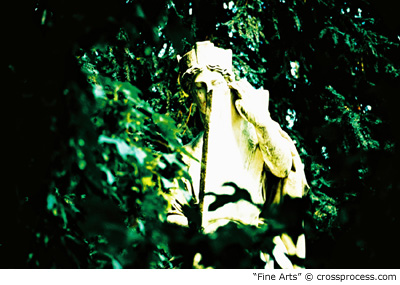
3 Out of 4 Visitors to the Met Never Make It to the Front Door
Despite the title, much of Carol Vogel's article is about how museums are making money from the internet, not just generating incremental traffic. It is a timely piece and speaks to the value of subscriptions, targeted online commerce, and using consumer-generated media to generate incremental revenue from the internet.
At a minimum, museums have two of the fundemental building blocks for owning real estate online and creating value as a result: High quality, original and exclusive content and a passionate audience. Some have even understood the value of tapping into that passion and giving those voices a platform. It is great to see that a few of them get it.
In their Off Center blog, Walker art Center's Paul Schmeizer provides some excellent insight into museums and blogging. Or, as he puts it: The museoblogosphere. He also points to a series on The State of Museum Blogs and conference notes from last week's Museums & the Web.
Quotes from the full NYT article:
Some days the first thing visitors to the Metropolitan Museum of Art see is the soaring neo-Classical Great Hall punctuated by Corinthian columns, niches brimming with flowers and the spacious information desk. Other days, they may glimpse the interior of the famous Temple of Dendur, with its ancient ruins and sloping glass wall looking onto Central Park.
Fifteen million people a year come upon these scenes without ever setting foot in the Met building. Instead, they visit the Web site, www.metmuseum.org, which provides a different view of the inside of the museum every day. These Internet surfers, from all over the globe, number more than three times the 4.5 million visitors who go to Fifth Avenue to the Met every year.
In less than a decade, Web sites for other museums, like the J. Paul Getty in Los Angeles and the Walker Art Center in Minneapolis, have become almost as important as the museums themselves. The sites offer a way to gain a new audience and even invite challenges to curatorial authority, while reinforcing the museum's identity. They are also becoming a robust source of revenue.
Every year, the Met puts about $1 million into improving its Web site. Last year it earned $6.5 million in total revenue, a figure that includes its memberships, shop and fund-raising efforts.
"If you want to keep capturing today's audience you have to up the ante," said Nik Honeysett, manager of Web services for the J. Paul Getty Trust, which this year redesigned its site, www.getty.edu. The site attracts about a million 10.5 million visitors a year, compared with 1.2 million who visit in person. And it is growing: this month the site had a million visitors for the first time.
"We had to learn to relinquish our curatorial authority, to get noninstitutional voices," said Kathy Halbreich, the director of the Walker. "The blog gives us a multiplicity of voices."
Increasingly, the Web has become a resource for institutions to learn more about their audiences.
"There are all kinds of approaches," Ms. Halbreich said. "I want to make this a rich resource, a very fluid representation of a very fluid organization."
Friday, March 31, 2006



 Comments: Comments:

|





 Comments:
Comments:


